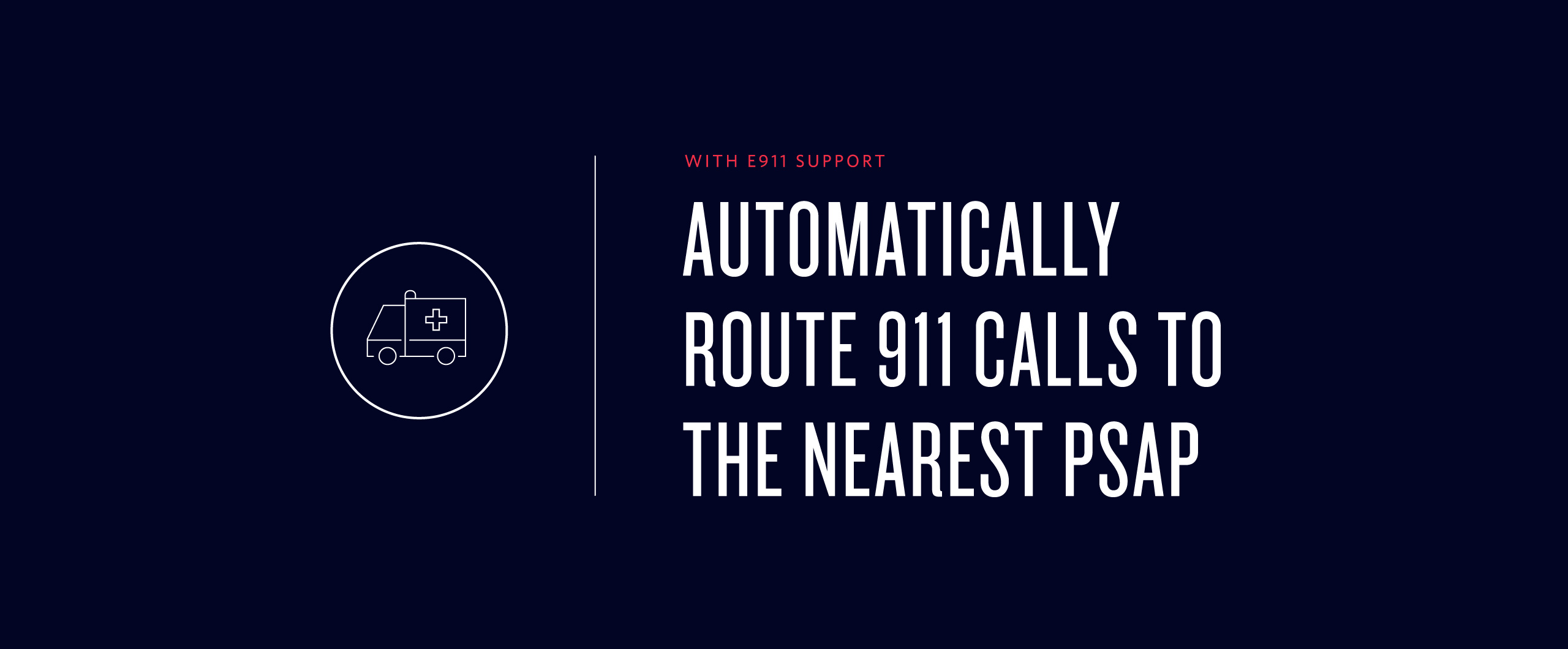Emergency Calling (E911) Available Today for SIP Trunking in Twilio Account Portal
Time to read: 3 minutes

We’re excited today to make Emergency Calling available within the US and Canada, and configurable for Elastic SIP Trunking in the Twilio account portal. Elastic SIP Trunking is our service that enables you to instantly provision global voice connectivity for VoIP infrastructure (whether that’s a PBX, SBC, or any other SIP infrastructure).
Emergency Calling allows you to route 911 calls to the appropriate Public Safety Answering Point (or PSAP) and programmatically pass along your address and callback number whenever the PSAP is equipped to receive that information.
Instant connectivity
Since launching SIP Trunking, we’ve consistently focused our roadmap on making deployment at scale instantaneous, and ongoing management easy. This is the next step. We’re extremely excited to be the first to bring the combination of instant number and trunk provisioning across US/Canada, with instant provisioning of E911 address details for localized emergency calling.
Twilio monitors and maintains our phone number inventory to ensure we have the most complete and high quality number inventory available on-demand. At any given time, we ensure our inventory in every area code we service is stocked with 50 times the average daily quantity provisioned across our entire customer base. Now you can use just one platform to get instant access to numbers across the US and Canada with granular coverage of every key region, along with your emergency calling service.
Getting started
From the numbers tab of your SIP Trunk you can input the address for the corresponding phone number, validate it, and enable Emergency Calling. You can test that the address is appropriately being shared accurately by dialing 9-3-3, a service that will read back the address associated with your number. In order to place emergency calls (or test calls) make sure that the From SIP Header uses E.164 formatting and is a Twilio number that is enabled for Emergency Calling.
We hope you never need to use it. But if you do – here’s what happens when you dial 911. The nationwide emergency services architecture is actually surprisingly complicated. In large counties there are a ton of PSAPs who provide coverage for a very specific region. It’s important for the call to get to the right PSAP, and to pass the address information for that caller to the PSAP wherever possible. This is actually remarkably complex – across the US there are nearly 6000 PSAPs, and some states have anywhere up to nearly 600 individual PSAPs. Across all of them, they handle nearly a quarter of a billion calls annually from landlines, mobile phones, and increasingly SIP trunks.
Twilio uses the address provided to route the 911 call to the appropriate PSAP with jurisdiction for that location. Those calls will route via E911 whenever possible (which is the vast majority of cases) meaning the caller’s address is passed to the PSAP. If E911 is not supported by the given PSAP, Twilio will use ‘Basic 911’ – still delivering the call to the right PSAP, but without the location information that the PSAP is unable to receive. In any rare case where neither path is possible, Twilio will route to the national emergency call center.
To learn more about Emergency Calling, configuration, and testing, check out the docs or get started enabling phone numbers on your SIP Trunks now.
Related Posts
Related Resources
Twilio Docs
From APIs to SDKs to sample apps
API reference documentation, SDKs, helper libraries, quickstarts, and tutorials for your language and platform.
Resource Center
The latest ebooks, industry reports, and webinars
Learn from customer engagement experts to improve your own communication.
Ahoy
Twilio's developer community hub
Best practices, code samples, and inspiration to build communications and digital engagement experiences.

